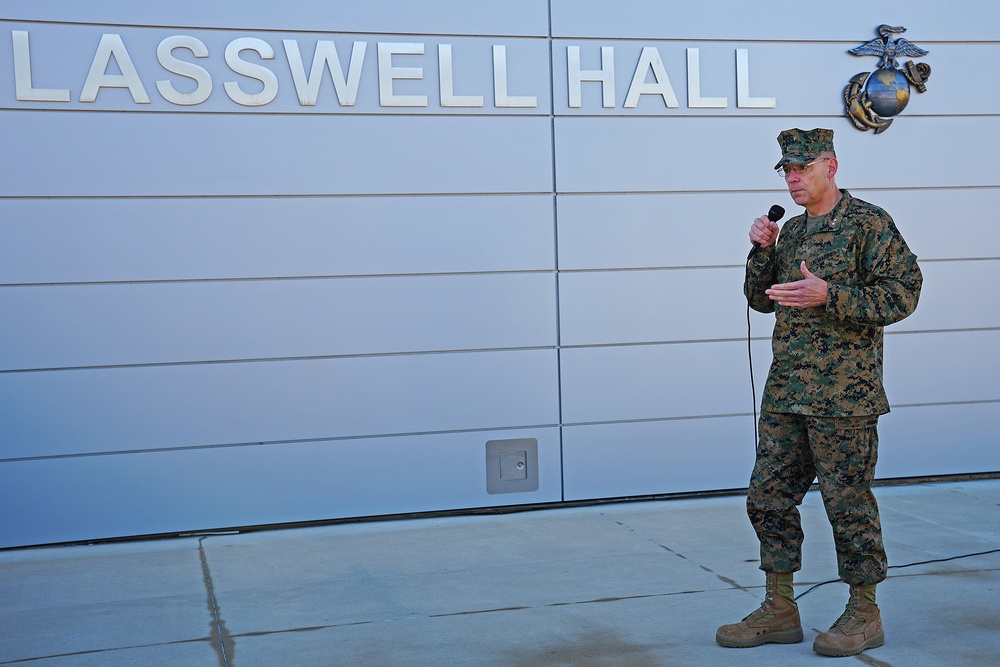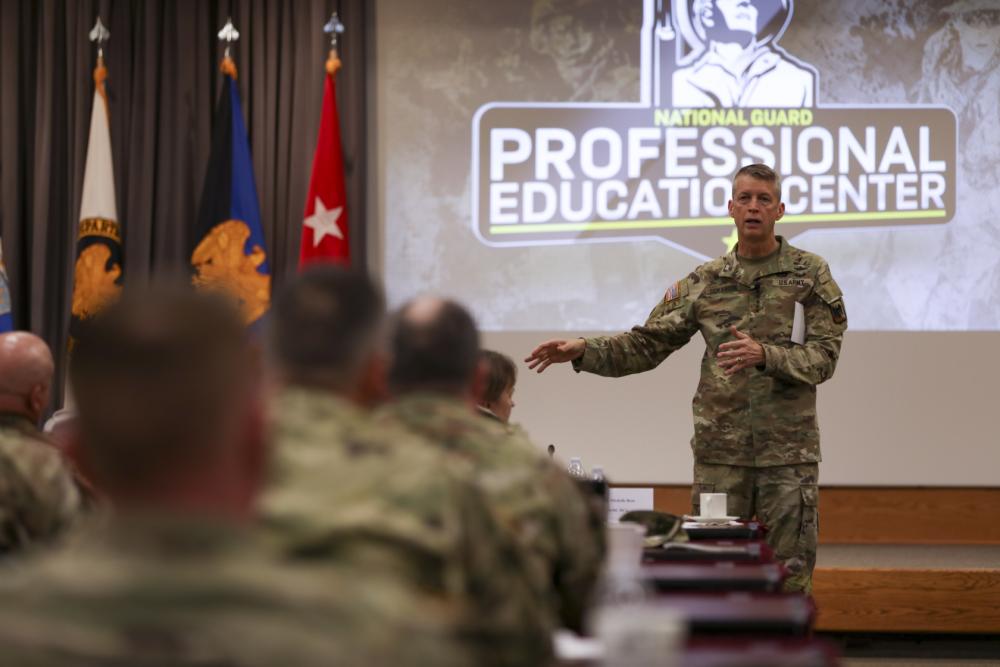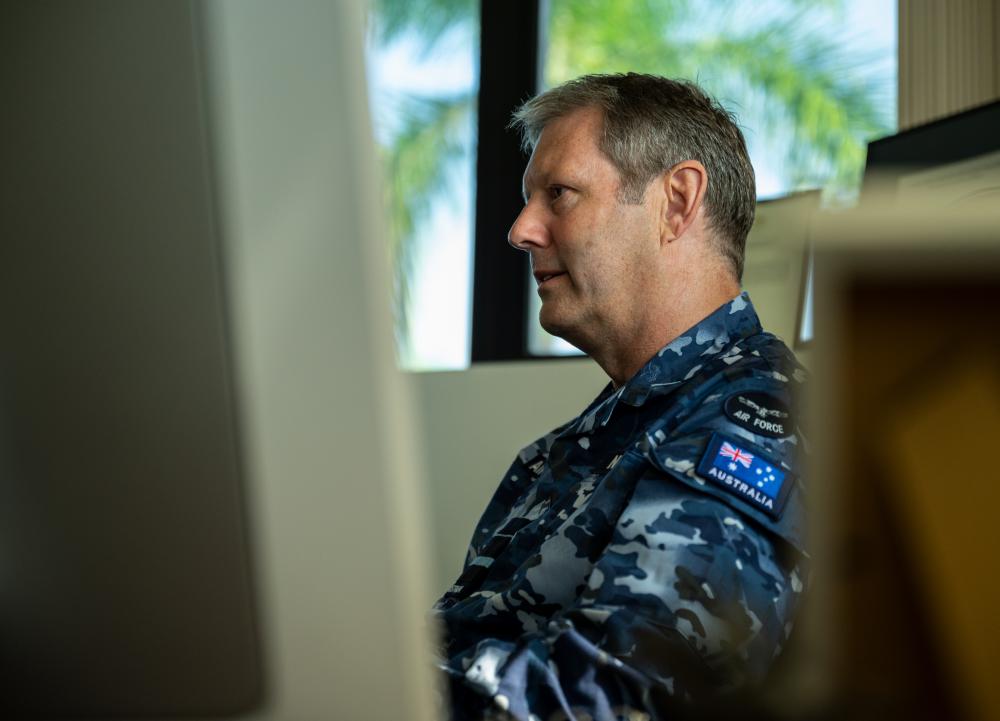CAMP ROBINSON, Ark. – The National Guard is integral to the National Defense Strategy, the Guard’s most senior officer told Army Guard leaders Jan. 11.
“This is the most ready and capable National Guard in history,” said Army Gen. Daniel Hokanson, chief, National Guard Bureau. “We need to tell our story.”
Hokanson addressed division and unit commanders and senior enlisted leaders from across the country gathered at the National Guard Professional Education Center for the director of the Army National Guard’s Green Tab Commanders Conference.
The CNGB encouraged attendees to tell decision-makers, stakeholders, and young people in their communities about the National Guard.
“The National Guard is 20% of the Joint Force,” he said. “We are at the nexus of our nation’s defense strategy.”
Today’s National Guard is the combat reserve of the Army and Air Force, Hokanson said. More than 22,100 Guardsmen are currently supporting overseas missions.
Guardsmen also continually support domestic operations, including the California Guardsmen now on duty helping their communities battle historic flooding. That capability is a direct result of their combat training, equipment, and experience, Hokanson said.
“Our primary mission — our reason for existence — is fighting our nation’s wars,” he said.
Hokanson’s priorities for the National Guard focus on the Guard’s people, readiness, modernization and reform.
In October, the Army released Field Manual 3-0, establishing multi-domain operations, or MDO, as its operational concept. After a generation of urban warfare in Iraq and Afghanistan, the Army’s focus is now on adversaries who can compete in land, air, maritime, space and cyberspace operations.
This refocused approach also includes three connected dimensions to understand the operational environment: physical, information and human.
“Technical capabilities are important, but combat is ultimately about people,” Hokanson said. “And that’s what sets the Guard apart. I would put our people up against any other fighting force in the world.”
As such, Hokanson reiterated to the group that he is working to ensure all Guardsmen are eligible to receive zero-cost health care, regardless of their duty status.
Hokanson also discussed modernization and championed the Guard’s ability to innovate and maintain its equipment.
From an Army report to Congress in August: “[T]he portion of the Total Force that will undergo focused modernization includes three theater headquarters, four corps, six divisions, including one Army Guard division, and 25 brigade combat teams, including five in the Guard.”
Also outlined in the report: “Army investments at the corps and division levels enable a data-centric, combat-credible force of Regular Army, Army National Guard, and Army Reserve formations able to conduct MDO as part of the Joint Force.”
The balance of the Army’s combat forces — five Regular Army and seven Army National Guard Divisions, is to be modernized after 2030, depending on the progress of the Army’s focused modernization effort and fiscal considerations.
Eight of the Army’s 18 divisions are in the Army National Guard, and Hokanson said all Army Guard units should be aligned under the division structure.
The 2022 National Security Strategy outlines U.S. challenges this decade as “setting the terms of our competition with the People’s Republic of China, managing the acute threat posed by Russia, and in our efforts to deal with shared challenges — particularly climate change, pandemics, and economic turbulence.”
The NSS also summarizes the current global environment: “By creating instability within countries and alliances, China and Russia create political separation that results in strategic ambiguity reducing the speed of friendly recognition, decision and reaction.”
The unclassified version of the National Defense Strategy — the Department of Defense’s framework document to meet top-level defense priorities, published last year — affirmed the United States cannot meet “complex and interconnected challenges alone. Mutually beneficial alliances and partnerships are our greatest global strategic advantage — and the center of gravity for this strategy.”
Guard elements are partnered with 45% of the world’s nations through the Department of Defense National Guard State Partnership Program. Through the SPP, which celebrates its 30th anniversary this year, Guardsmen train with foreign counterparts to increase global stability and security capabilities and develop long-term relationships.
“The State Partnership Program is one of our country’s best programs,” Hokanson said. “Since its establishment in 1993, we have grown to almost 100 partnerships. We have built enduring long-term relationships, not only between states and nations but particularly between our junior and senior level leaders, militarily.”
Hokanson said the Guard is looking to grow the SPP by adding 30 partner nations in the next decade.
| Date Taken: |
01.13.2023 |
| Date Posted: |
01.13.2023 15:28 |
| Story ID: |
436765 |
| Location: |
CAMP ROBINSON, AR, US |
| Web Views: |
25 |
| Downloads: |
0 |
PUBLIC DOMAIN
This work, Hokanson to Army Guard Leaders: Tell Our Story, by SFC Zach Sheely, identified by DVIDS, must comply with the restrictions shown on https://www.dvidshub.net/about/copyright.


 Private Internet Access gives you unparalleled access to thousands
of next-gen servers in over 83 countries and each US state. Your
VPN experience will always be fast, smooth, and reliable.
Private Internet Access gives you unparalleled access to thousands
of next-gen servers in over 83 countries and each US state. Your
VPN experience will always be fast, smooth, and reliable.
![DVIDS – Images – USS Nitze (DDG 94) Daily Operations [Image 4 of 4] DVIDS – Images – USS Nitze (DDG 94) Daily Operations [Image 4 of 4]](https://101veterans.com/wp-content/uploads/2023/01/1673738742_1000w_q75.jpg)

![DVIDS – Images – 3d MLR JTAC Training [Image 1 of 9] DVIDS – Images – 3d MLR JTAC Training [Image 1 of 9]](https://101veterans.com/wp-content/uploads/2023/01/1673695412_1000w_q75.jpg)





![DVIDS – Images – 39th EAS delivers life-saving supplies throughout the AOR [Image 3 of 17] DVIDS – Images – 39th EAS delivers life-saving supplies throughout the AOR [Image 3 of 17]](https://101veterans.com/wp-content/uploads/2023/01/1673435469_1000w_q75.jpg)